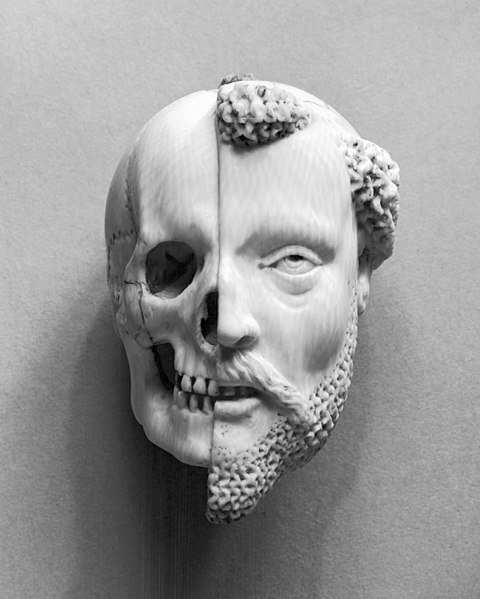A near-death experience (NDE) is a profound personal experience associated with death or impending death, which researchers describe as having similar characteristics. When positive, which the great majority are, such experiences may encompass a variety of sensations including detachment from the body, feelings of levitation, total serenity, security, warmth, joy, the experience of absolute dissolution, review of major life events, the presence of a light, and seeing dead relatives. When negative, such experiences may include sensations of anguish, distress, a void, devastation, and seeing hellish imagery.
Passage by Anna Sahlstén.
Ascent of the Blessed by Hieronymus Bosch is associated by some NDE researchers with aspects of the NDE
Entering darkness, seeing the light
EEG research data by Gang Xu, et al.
Death is the irreversible cessation of all biological functions that sustain a living organism. The remains of a former organism normally begin to decompose shortly after death. Death eventually and inevitably occurs in all organisms. Some organisms, such as Turritopsis dohrnii, are biologically immortal, however they can still die from means other than aging. Death is generally applied to whole organisms; the equivalent for individual components of an organism, such as cells or tissues, is necrosis. Something that is not considered an organism, such as a virus, can be physically destroyed but is not said to die, as a virus is not considered alive in the first place.
The human skull is used universally as a symbol of death.
A flower, a skull, and an hourglass stand for life, death, and time in this 17th-century painting by Philippe de Champaigne.
French – 16th-/17th-century ivory pendant, Monk and Death, recalling mortality and the certainty of death (Walters Art Museum)
The Premature Burial, Antoine Wiertz's painting of a man buried alive, 1854








